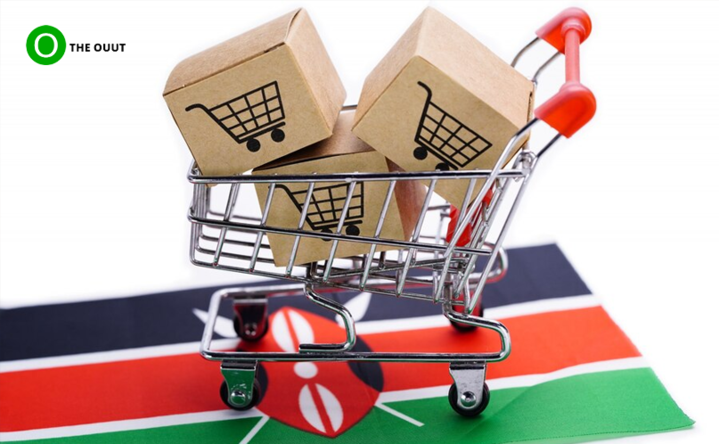Reviewing the Kenyan E-Commerce Sector

The e-commerce Sector is growing rapidly in Kenya, with user penetration exceeding the regional average and revenues expected to grow at a 16.4% annual rate by 2025. E-commerce generated the most digital revenue in Kenya in 2020, with $1.1 billion and a 76.1 percent share. Within the Kenyan e-commerce market, ecommerceDB considers five markets. Fashion is the most important market, accounting for 39.2 percent of Kenyan e-commerce revenue. It is followed by Electronics & Media, which accounts for 37.6 percent, Toys, Hobby & DIY, which accounts for 10.5 percent, Furniture & Appliances, which accounts for 8.4 percent, and Food & Personal Care accounts for the remaining 4.2 percent.
Startups in the e-commerce sector have also piqued the interest of venture capitalists. According to Disrupt Africa’s Kenyan Tech Ecosystem report 2022, the sector received 9.4 percent of the country’s total VC funding between January 2015 and mid-November 2022, totaling $1,281,918,200. While fintech generally accounts for the lion’s share of funding ventures, a few sectors have come out on top in terms of total secured funding since 2015. Agri-tech and energy have received the most capital at various points, depending on whether Twiga Foods or M-KOPA Solar secured a large round that year, while in 2022; e-commerce emerged as a dominant force.
According to data from market intelligence firm Briter Bridges and The Big Deal, Kenya raised $1.1 billion, more than doubling the funding that East Africa’s largest economy received in 2021, with e-commerce and retail tech dominating, with 14 startups securing a total of $230,796,000. This amount accounts for just under 20% of all Kenyan startup funding in history, with major rounds for Copia, MarketForce, and Wasoko accounting for the majority of that.
Factors Driving the Growth of the E-Commerce Sector in Kenya
Several factors are driving the growth of e-commerce in Kenya. Kenya recently approved a digital economy blueprint aimed at growing the ICT sector and e-commerce activity. Kenya, after Mauritius, has the second-highest proportion of people aged 15 and above with a financial, mobile, or bank account that allows them to transact online, according to UNCTAD. This is primarily due to the widespread use of the M-Pesa mobile money system.
Furthermore, consumer demand for e-commerce in Kenya is rapidly increasing, which has been accelerated by the COVID-19 pandemic, where locals use the platforms to limit their exposure to crowded stores.
Furthermore, the government’s ambition for universal 4G coverage, combined with increased smartphone ownership, positions Kenya as one of the fastest-growing e-commerce markets. According to “Digital 2022 Global Digital Overview,” in January 2022, Kenya had 11.75 million social media users. Between 2021 and 2022, the number of social media users in Kenya increased by 750,000 (+6.8%), representing 21.1% of the total population.

Despite the positive growth trends, there are challenges for e-commerce startups in Kenya. These challenges include logistics and infrastructure, physical addressing, the cost of technology, as well as cybersecurity. Many African countries, including Kenya, have very poor fraud detection and prevention mechanisms, which makes it difficult to build trust within African online marketplaces.
Kenya’s regulatory environment is evolving. In 2020, President Kenyatta signed the Finance Act 2020, which included the implementation of a Digital Service Tax. Online trade platforms in Kenya have traditionally not been regulated under the Kenya Information and Communications Act (KICA) because they do not constitute electronic services as defined by the act and are thus not licensable. This means that consumers are not protected under the Consumer Protection Regulations (2010), which apply in cases where the Authority’s licensees provide services.
Top e-Commerce Platforms in Kenya
The growth of e-commerce in Kenya is highlighted by the number and size of new players in the market. Kenya’s largest Telco, Safaricom, launched “Masoko,” an e-commerce platform, joining other dominant players in the market such as NYSE-listed Jumia, Jiji, Glovo, and U.S-affiliated Copia, which provides e-commerce solutions for low-income consumers. Growth in hospitality has also led to the entry of platforms such as UBER Eats. The growth in e-commerce has been further fueled by strong growth in social media adoption as well as increased diversification of marketing channels.
Some of the other big players in the Kenyan e-Commerce market are mydawa.com. The store had a revenue of $8.9 million in 2021. Others are Jumia.co.ke and phoneplacekenya.com as the second-and third-largest stores with $8.7 million and $3.3 million, respectively. Altogether, the top three stores account for 41.6% of Kenya’s top 25 online stores’ revenue in 2021. The likes of MarketForce, Wasoko, OLX, and Kilimall have recently been challenging for the crown.
Over the years, the growth of Kenyan e-commerce startups and, by extension, the e-commerce industry has been very impressive. From funding to the number of startups operating in the vertical, not to mention its contribution to the country’s economy in terms of employment and government revenue. As the Kenyan tech ecosystem matures, it is only safe to expect a lot more from the sector.
